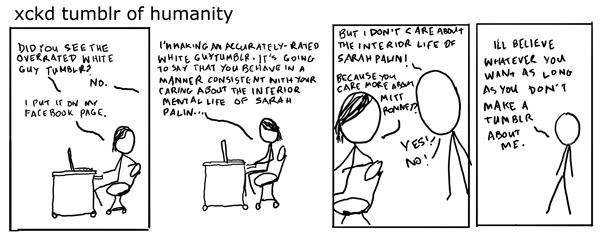Today (Wednesday, Irish time) is the hundredth anniversary of Flann O’Brien’s (Brian O’Nolan’s) birth. Several of us here at CT are fans – I think it was John Holbo who first transformed O’Brien’s Plain People of Ireland (the interlocutor in many of his newspaper columns) into the Plain People of the Internet. This “piece”:http://www.irishtimes.com/newspaper/ireland/2011/1001/1224305062073.html by Fintan O’Toole is the best account of his life that I’ve seen. This “longer article”:http://www.bostonreview.net/BR33.4/boylan.php by Roger Boylan in the _Boston Review_ is also worth reading, as long as you take good care to stop reading at the point where Anthony Cronin, bard-befriending bollocks and professional bore, introduces himself and goes on to provide “many delightful insights” into his own “rich and various” life.
People may reasonably disagree about which are the very best bits of O’Brien’s work. My own favorite is the description of the practical philosopher De Selby’s efforts (in The Third Policeman) to take advantage of the “appreciable and calculable interval of time between the throwing by a man of a glance at his own face in a mirror and the registration of the reflected image in his eye.”
bq. De Selby, ever loath to leave well enough alone, insists on reflecting the first reflection in a further mirror and professing to detect minute changes in this second image. Ultimately he constructed the familiar arrangement of parallel mirrors, each reflecting diminishing images of an interposed object indefinitely. The interposed object in this case was De Selby’s own face and this he claims to have studied backwards through an infinity of reflectins by means of a ‘powerful glass.’ He claims to have noticed a growing youthfulness in the reflections of his face according as they receded, the most distant of them – too tiny to be visible to the naked eye – being the face of a beardless boy of twelve, and, to use his own words, ‘a countenance of singular beauty and nobility.’ He did not succeed in pursuing the matter back to the cradle ‘owing to the curvature of the earth and the limitations of the telescope.’
